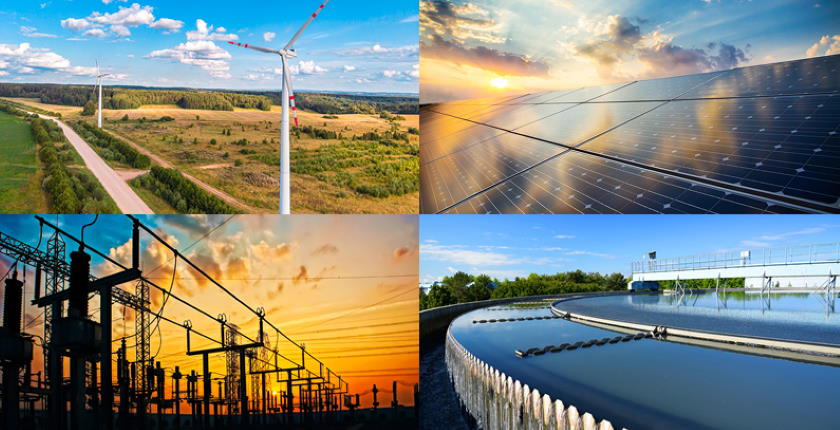
Photo: CMS
Share
Authors: Thomas Hamerl, Partner, and Georg Gutfleisch, Attorney-at-Law at CMS Austria
In September 2020, the Austrian government published the draft Renewable Energy Expansion Act (Erneuerbaren-Ausbau-Gesetz, REEA), a comprehensive legislation package aimed at reshaping the Austrian legal framework on renewable energy generation, distribution, and consumption. Most recently, in March 2021, the government presented its final version of the REEA, which is now subject to deliberation and approval by the Austrian parliament, and which it aims to enter into force as soon as by the end of the first half of 2021.
As outlined in our recent feature article, one of the main pillars supporting Austria’s attempt to achieve its share of the European climate targets will be to implement what are known as energy communities. In a nutshell, energy communities, as an important component of the planned energy transition in Austria, are non-profit-orientated legal entities intended to decentralize the generation, distribution, and consumption of renewable energy mainly for the public benefit.
To this end, energy communities will promote the widespread production, (local/regional) distribution, and consumption of renewable energy and may either be established as (1) renewable energy communities (Erneuerbare Energiegemeinschaften, RECs) – a regional conglomeration of (individual) renewable energy producers and consumers in spatial proximity connected via the low-voltage distribution network (local area) or medium-voltage distribution network (regional area), or (2) citizen energy communities (Bürgerenergiegemeinschaften, CECs) – a national conglomeration of (individual) renewable energy producers and consumers.
With the final version of the REEA, the Austrian government proposed certain significant changes to the September 2020 ministerial draft, intended to bring energy communities closer to fruition. On this basis, energy communities will clearly continue to occupy a prominent place in Austria’s climate and energy strategy.
Extension of involved stakeholders
Pursuant to the proposed final version of the REEA, members of an REC can be private individuals, small or medium-sized enterprises (SMEs in the meaning of the definition provided by the European Commission recommendation 2003/361), municipalities, public authorities that provide local services, and other legal entities under public law.
Because the main purpose of RECs is to benefit the public, not to generate financial gain, the participation in an REC must not fall under the scope of the respective participant’s main business object (excluding, e.g., energy supply companies or electricity traders under the Austrian Electricity Industry Act 2010 (Elektizitätswirtschafts- und -organisationsgesetz 2010, EIA 2010)).
Compared to the September 2020 ministerial draft of the REEA, the Austrian government now excluded condominium communities (Wohnungseigentumsgemeinschaften) themselves – but not their members – from establishing or participating in an REC but also expanded the range of potential participants to (other) legal entities under public law, therefore, enabling public institutions (such as public schools or hospitals) to participate and benefit from a nearby REC. Furthermore, the proposed final version of the REEA now explicitly enables renewable energy generators, not controlled by a supplier or electricity trader pursuant to the EIA 2010 (see above), to participate in a REC.
According to the REEA legislative materials, the amendment on (local) renewable energy generators is specifically designed to encourage the participation of wind farms, hydroelectric power plants and larger-scale photovoltaic projects that feed the electricity grid on a local or regional scale, which can now directly market their renewable energy to other participants of their REC (provided they are still eligible to participate under general terms, i.e., they qualify as SMEs in the meaning of the European Commission recommendation 2003/361).
In comparison to RECs, the range of potential CEC members continues to be broader and may also include larger corporations and energy companies, provided the members exercising control over a CEC must be strictly limited to private individuals, public regional authorities (Gebietskörperschaften), and small enterprises (in the meaning of the European Commission recommendation 2003/361, if they are not electricity companies pursuant to the EIA 2010).
Contracting and leasing models
In recent years, private or public acquisition of renewable energy generation facilities in Austria (especially in the photovoltaic sector) was often financed through alternative financing methods, such as sale-and-lease-back models or crowdfunding (e.g. citizen participation models).
The Austrian government has now taken this trend into consideration and clarified that renewable energy generation facilities included in an REC or a CEC can either be owned by the energy community itself, its members, or third parties, as long as the energy community retains effective control over such power generation facilities – except for owner-members who consume the energy they themselves produce. Renewable energy generation facilities, it is planned, will be able to participate in more than one energy community in Austria starting in 2022.
This means that contracting or leasing models are now explicitly permissible under the new regime applicable to energy communities. In such models, RECs and CECs can obtain the necessary control over the participating renewable energy generation facilities through contractual arrangements, but project developers and investors can still continue to pursue their traditional business (i.e., they maintain civil-law ownership of renewable energy generation facilities, which are made available to the respective energy community).
Facilitation of corporate requirements
Energy communities are in principle established as independent legal entities. They can be organized as private associations (Vereine), partnerships, limited liability companies, stock corporations, or any other legal form with legal personality (i.e., no longer including condominium communities; see above), depending on the specific needs of the respective energy community and its members.
The REEA legislative materials now stipulate that distribution system operators, in whose concession areas an REC’s or a CEC’s generation plants are connected, shall only be provided with the information (and changes thereto) that are necessary for metering and billing. To this end, the proposed final version of the REEA limits the rules that must be included in the respective REC’s or CEC’s foundation documents, of which the network operator must be notified, to the following:
- a description of how the generation plant(s) (storage plant(s) if applicable) function and an indication of the metering point numbers;
- a description of the participating members’ consumption units;
- rules on the notional share of each participating member and how the energy produced is to be distributed amongst those members;
- rules on the allocation of feed-in energy not consumed by the participating members as per fifteen-minute interval;
- rules on the proceedings for the admission and withdrawal of participating members; as well as
- rules on the termination or dissolution of the renewable energy community and dismantling of the production plant(s) (storage plant(s) if applicable).
Other rules, which were initially expected to be included in the respective REC’s or CEC’s foundation documents (such as rules on data management and processing of energy data, insurance, or the allocation of liability) may now be subject to individual contractual arrangements between the members. According to the REEA legislative materials, this should facilitate RECs’ and CECs’ foundation proceedings and corporate operation.
Improvements to public funding and financial benefits
Although not directly related to energy communities, the proposed final version of the REEA also includes significant improvements to the scope and extent of public funding and subsidies for the generation of renewable energy, such as a new regime on (variable) market premiums or the allocation of public subsidies for wind parks, hydroelectric power plants, biogas facilities or photovoltaic systems. In this connection, the REEA public funding and subsidies regime will be centrally organized and allocated by a newly established REEA-funding agency (EAG-Förderabwicklungsstelle) in accordance with a structured regime (including the execution of public subsidy tenders or the conclusion of funding contracts).
The improvements to the public funding and subsidies landscape for Austrian renewable energy sources may also significantly encourage the acquisition and installation of even more renewable energy generation facilities for their potential participation in RECs or CECs in the near future.
The implementation of energy communities in Austria will also involve a wide range of other financial benefits for its members, including the following: According to the proposed final version of the REEA, the distribution of jointly generated renewable energy within an REC or a CEC is conducted outside the balancing group system (Bilanzgruppensystem), which will likely also involve a reduction of or even exemptions from related system costs. The proposed final version of the REEA further provides that RECs (not CECs) will continue to be subject to a reduced grid fee (Ortstarif) due to energy distribution being limited to the low-voltage distribution network (local area) or the medium voltage network (regional area). RECs will be exempted from the Austrian electricity duty.
Outlook
With the proposed final version of the REEA, the Austrian government has taken a further decisive step towards reshaping the renewable energy landscape in Austria and achieving the climate targets agreed at the European level. After having submitted the proposed final version of the REEA to the Austrian parliament in March 2021, it is now subject to further deliberation. The Austrian government aims for the final version of the act to enter into force in the first half of 2021, if it achieves the necessary parliamentary approval.
Given the rather broad scope of the proposed rules on energy communities, the proposed new law naturally leaves room for shaping its practical implementation. With the latest amendments to the initial ministerial draft and the legislative materials associated with it, the envisaged energy communities regime in Austria has moved closer to the requirements imposed by practice. And it is only in practice that the actual implementation and effectiveness of the rules can be sought.









Be the first one to comment on this article.